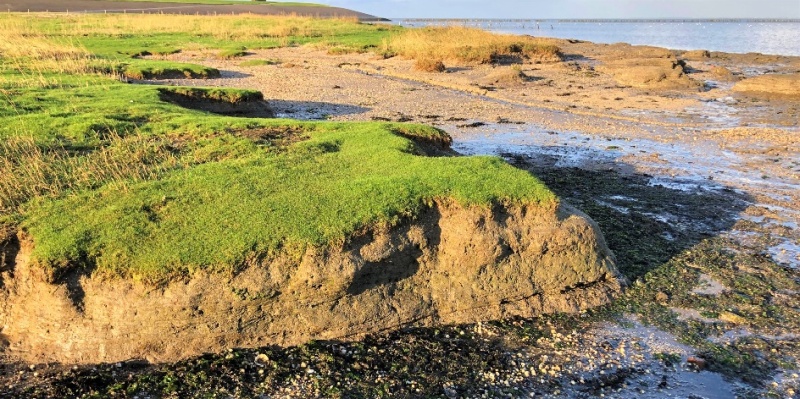S. Dzimballa1*, V. Kitsikoudis 1, B.W. Borsje1, D.C.M. Augustijn1
1 Water Engineering and Management, University of Twente, Enschede, The Netherlands
*corresponding author:
Introduction
Salt marshes are valuable ecosystems that provide a variety of services worldwide. Their potential for coastal protection by attenuating waves is increasingly being demonstrated. However, salt marshes are temporally and spatially variable systems. Therefore, it is important to understand and predict the dynamics of salt marshes to assess their resilience to future stresses and to underpin the design of nature-based solutions such as living dikes. Resilient marshes are stable or expanding over time under varying pressures. However, tipping points can be reached for example under conditions of high wave energy and low sediment availability, leading to cliff formation at the transition from the salt marsh to the mudflat and salt marsh retreat. The physical factors that determine lateral salt marsh dynamics, and the interaction between salt marshes and tidal flat dynamics, are poorly understood and rarely parameterized in numerical models. Therefore, this study aims to (i) provide insights into the natural dynamics of salt marshes and tidal flats, (ii) predict future changes in biogeomorphological processes under different scenarios of sea level rise, storms, and suspended sediment availability, and (iii) determine the influences that artificial structures (i.e. brushwood dams) can have on the resilience of salt marshes.
Methods
The research will be conducted in three phases. First, the natural dynamics of salt marshes and tidal flats will be studied using high-resolution, UAV-derived DEMs and orthomosaics of five different salt marshes in the Dutch Wadden Sea over a three-year period. Secondly, the resilience of salt marshes to different influences (e.g. wave height, availability of suspended sediment, rise in sea level) will be tested by extending a recently developed numerical model (Willemsen et al., 2022) and including cliff erosion processes. The model will be calibrated and validated using the field data gathered in phase 1. Thirdly, the effect of artificial structures on salt marsh dynamics will be investigated using the previously validated model.
Results
This research is part of the project Living on the Edge and runs from 2022 to 2026. The results will provide insights into the resilience of salt marshes, potential future tipping points leading to salt marsh retreat, and the use of artificial structures to help ensure the resilience of salt marshes under future pressures.

Figure 1: Wierum salt marsh cliff (image courtesy: S. Dzimballa).
References
Willemsen et al. (2022). Modeling Decadal Salt Marsh Development: Variability of the Salt Marsh Edge Under Influence of Waves and Sediment Availability. Water Resources Research, 58(1), 1–23.
I. Surname1*, F.N. Another-Surname2 , Y. Next-Surname2
1 University Name, Country; 2 Organization Name, Country
* Corresponding author: mail.name@organization.org


